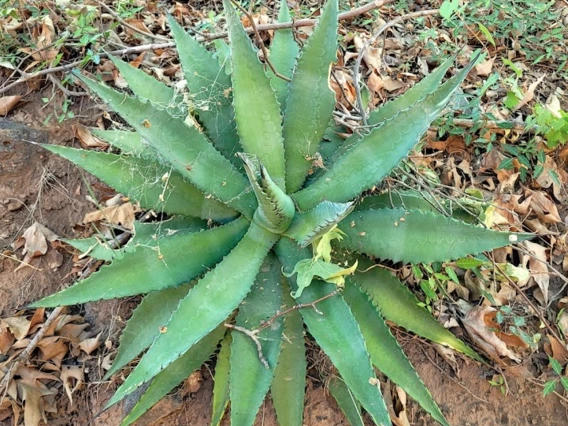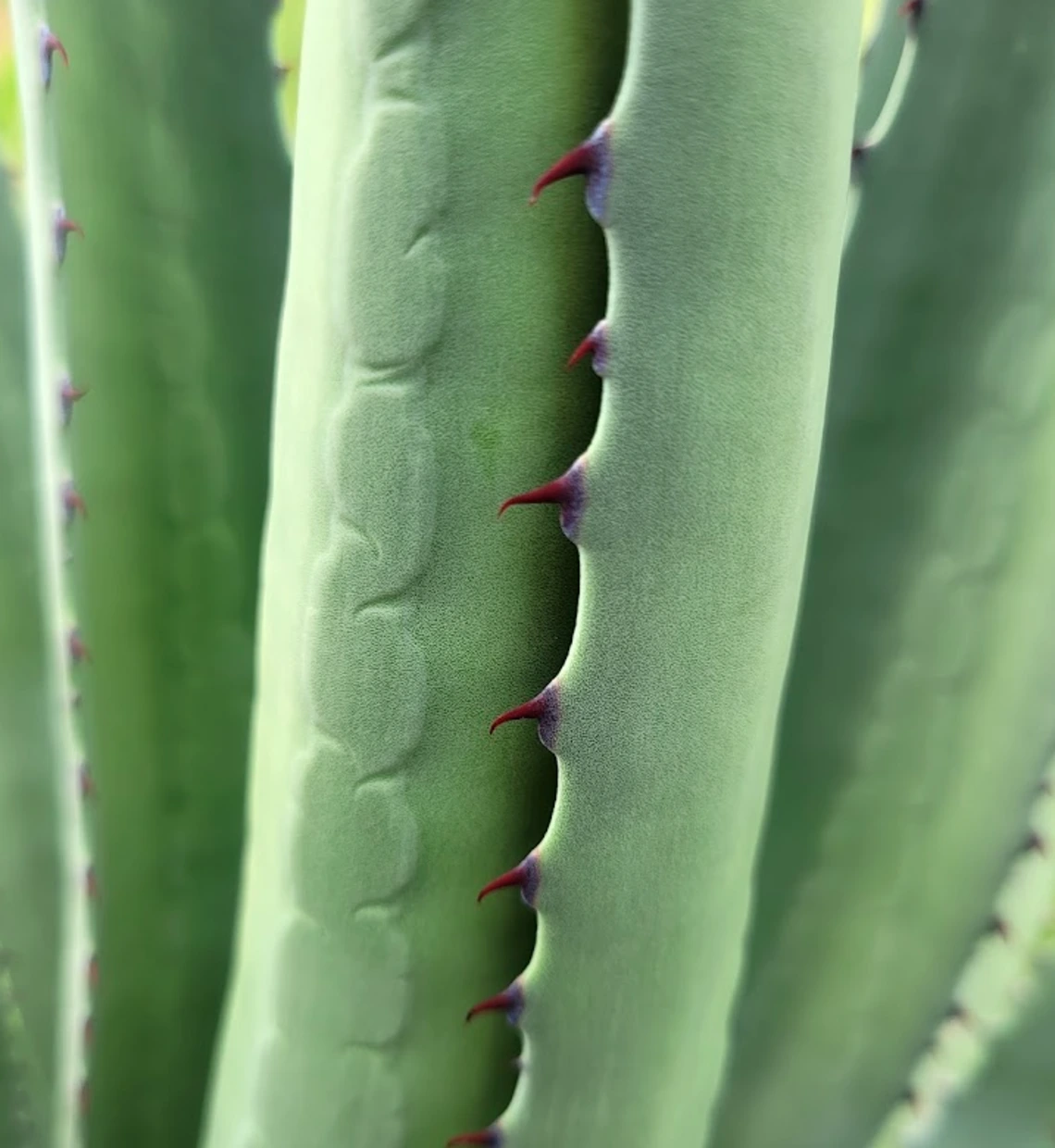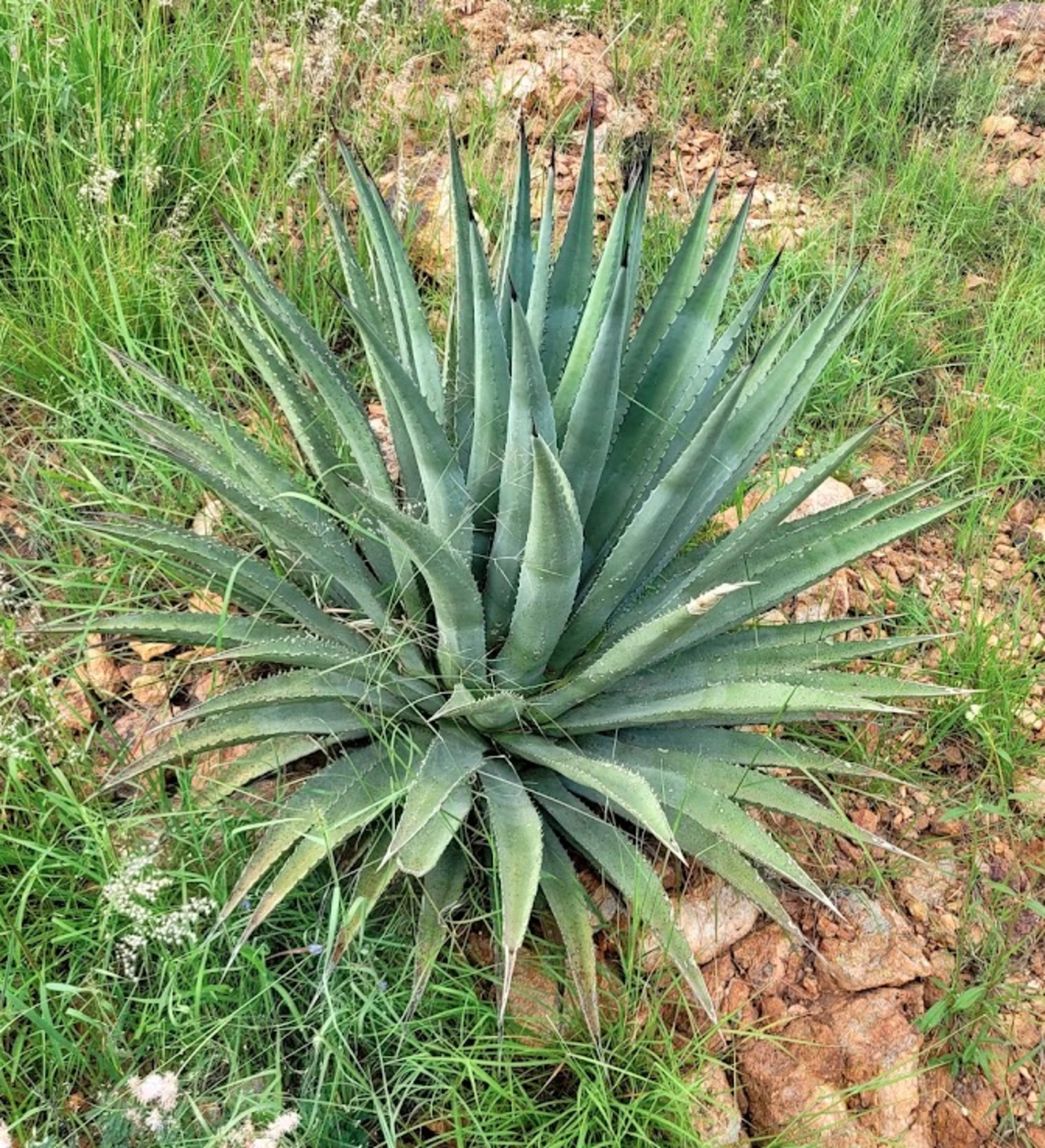Family: Asparagaceae
Compound: Aga pal
Geographic Origin: southwestern US, northwestern MX
Characteristics: A medium to large perennial succulent with sword-like, upright leaves arising from a solitary rosette. This plant can grow to 1.2m (4ft) tall and equally wide. The leaves are a glaucous green-grey color, sometimes having a slightly red hue when sun stressed. The leaves are typically 35.5-76cm (14-30in) long and 6.3-10.15cm (2.5-4in) wide, possessing teeth-like serrations along the leaf margin as well as a spined apex measuring up to 5.75 (2.25in) long. This plant produces an enormous inflorescence that is thick, with a glaucous-green color and subtle purple tint. It grows up to 6m (20ft) tall at maturity and produces the inflorescence on the top half. The inflorescence is paniculate, composed of 11-26 lateral umbel branchlets. The umbels are densely packed, consisting of 8-16 erect peduncles with a reddish/purple coloration when flower buds form. Flowers are 3.8-5cm (1.5-2in) long. The flowers have a pale yellow-green color, and exude a strong, sour, musky fragrance. This plant is monocarpic and will die once it has flowered and set fruit. The flower stalk begins to emerge in April and blooms develop in the summer. This Agave typically does not produce offsets in the wild. The fruits are capsules approximately 3.8-6.4cm (1.5-2.5in) long and 2cm (0.75in) wide. The capsule contains many thin, somewhat circular, black seeds, each measuring 6mm (0.25in) in diameter.
Natural History: Commonly found growing on dry, rocky, open slopes at elevations of 1066-2286m (3500-7500ft). This plant is the largest species of Agave naturally occurring in the United States. Its nectar attracts hummingbirds, and it is the larval host of the Arizona giant-skipper butterfly. This plant is a crucial food source for many nectar-feeding migratory bats. Native bees and even woodpeckers will construct holes in the dried stalks of dead plants.
Cultivation Notes: Prefers full sun, but will tolerate part shade, though plants grown in shade may look different than those grown in full sun. Very hardy, tolerating drought and a range of soils. It is also very cold tolerant, withstanding temperatures as low as -11C (12F). This plant is very slow growing and has a long life of up to 25 years making it an excellent choice for gardens and landscaping despite its inevitable post-bloom death.
For general plant propagation information, click here
Ethnobotany: This plant has had great value among the Indigenous Peoples of North America, being used extensively for food, drink, fiber for weaving, soap, and medicinal uses.
Citations:
Irish, Gary, and Mary F Irish. Agaves, Yuccas, and Related Plants: A Gardener's Guide. 1st ed., Timber Press Incorporated, 2000.
SEINet Arizona – New Mexico Chapter. Retrieved June 19, 2024.
Arizona Sonora Desert Museum. Retrieved June 19, 2024.







